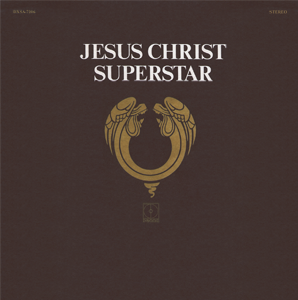
Jesus Christ Superstar is a sung-through rock opera with music by Andrew Lloyd Webber and lyrics by Tim Rice. Loosely based on the Gospels' accounts of the Passion, the work interprets the psychology of Jesus and other characters, with much of the plot centered on Judas, who is dissatisfied with the direction in which Jesus is steering his disciples. Contemporary attitudes, sensibilities and slang pervade the rock opera's lyrics, and ironic allusions to modern life are scattered throughout the depiction of political events. Stage and film productions accordingly contain many intentional anachronisms.

From the Manger to the Cross or Jesus of Nazareth is a 1912 American drama film directed by Sidney Olcott, written by Gene Gauntier, and stars Robert Henderson-Bland as Jesus of Nazareth. Filmed on location in Egypt and in Palestine, it tells the story of Jesus' life, interspersed with verses from The Bible.

Harry Reichenbach was a US press agent and publicist who staged sensational publicity stunts to promote films. He was one of the founding members of the Associated Motion Picture Advertisers.

The King of Kings is a 1927 American silent epic film produced and directed by Cecil B. DeMille. It depicts the last weeks of Jesus before his crucifixion and stars H. B. Warner in the lead role.

Kinemacolor was the first successful colour motion picture process, used commercially from 1908 to 1914. It was invented by George Albert Smith in 1906. He was influenced by the work of William Norman Lascelles Davidson and, more directly, Edward Raymond Turner. It was launched by the Charles Urban Trading Company of London in 1908. From 1909 on, the process was known and trademarked as Kinemacolor and was marketed by Charles Urban’s Natural Color Kinematograph Company. Urban sold Kinemacolor licenses around the world. It was a two-colour additive colour process, photographing a black-and-white film behind alternating red/orange and blue/green filters and projecting them through red and green filters.
Mary Magdalene is a religious figure in Christianity.
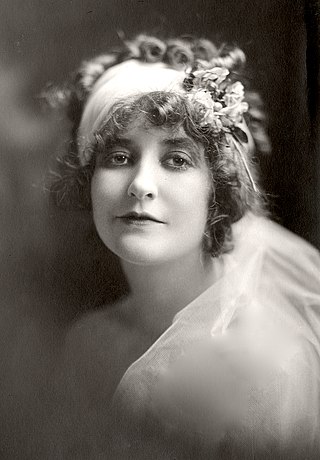
Rhea Ginger Mitchell was an American film actress and screenwriter who appeared in over 100 films, mainly during the silent era. A native of Portland, Oregon, Mitchell began her acting career in local theater, and joined the Baker Stock Company after completing high school. She appeared in various regional theater productions on the West Coast between 1911 and 1913.

The Last Temptation of Christ is a 1988 epic religious drama film directed by Martin Scorsese. Written by Paul Schrader with uncredited rewrites from Scorsese and Jay Cocks, it is an adaptation of Nikos Kazantzakis' controversial 1955 novel of the same name. The film, starring Willem Dafoe, Harvey Keitel, Barbara Hershey, Andre Gregory, Harry Dean Stanton and David Bowie, was shot entirely in Morocco.

Lule Warrenton was an American actress, director, and producer during the silent film era. She appeared in more than 80 films between 1913 and 1922. She was born in Flint, Michigan and died in Laguna Beach, California and was the mother of cinematographer Gilbert Warrenton.

Arthur John Maude was an English actor, screenwriter, and film director.

Who's Your Neighbor? is a 1917 silent American propaganda and drama film directed by S. Rankin Drew. The film's plot focuses around reformers who pass a law to force prostitutes, including Hattie Fenshaw, out of the red light district. Fenshaw becomes Bryant Harding's mistress and lives in an apartment next door to a reformer, and continues to ply her trade. After Fenshaw becomes familiar with Harding, his son, daughter and the daughter's fiancé, the climax of the film occurs as the cast assembles at Fenshaw's apartment. Harding returns and a fight breaks out that results in the reformers' arrival and concludes with the presumption that Fenshaw returns to a place of "legalized vice". The drama was written by Willard Mack and was his first foray into screen dramas. The film proved controversial, but is noted as a great success. The film originally debuted on June 15, 1917, but it was rejected by the National Board of Review and was later approved after a revision, but the film continued to be labeled as an immoral production. The film is presumed to be lost.
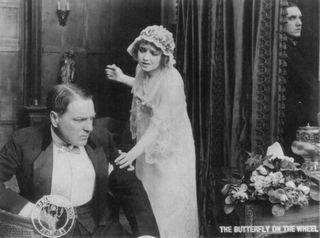
The World Film Company or World Film Corporation was an American film production and distribution company, organized in 1914 in Fort Lee, New Jersey.
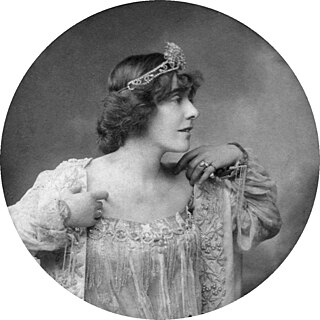
Constance Crawley was an English actress best known for leading roles in Shakespeare tragedies. She gained notice on the American stage at the start of the 20th century, and later starred in and wrote several silent films.

Everyman is a modern play produced by Charles Frohman and directed by Ben Greet that is based on the medieval morality play of the same name. The modern play was first performed in 1901 on tour in Britain. It opened in the United States in 1902 on Broadway, where it ran for 75 performances, followed by tours over the next several years that included four Broadway revivals.
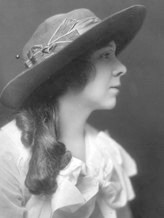
Nell W. Franzen was an American film and stage actress of the silent era. A native of Portland, Oregon, Franzen began her career acting in local theatre. She signed with the Baker Theatre Company and performed in various stage productions, becoming a prolific stage actress in the Pacific Northwest.

The Shadow of Nazareth is a 1913 silent movie set in Jerusalem at the time of the crucifixion of Jesus. Starring Arthur Maude and Constance Crawley, it depicts the story of a vain woman named Judith, her brother Judas Iscariot, and her two admirers: Barabbas, who is a thief, and Caiaphas, the high priest of Jerusalem.

Claude Hamilton Cooper was an English-American character actor on stage, motion pictures, and radio.

Garth Davis is an Australian television, advertising and film director, best known for directing the film Lion (2016), and the film Mary Magdalene, written by Helen Edmundson. He earlier directed episodes of the series Top of the Lake (2013).
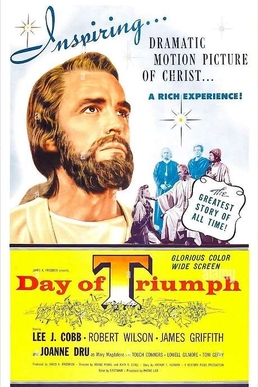
Day of Triumph is a 1954 American drama film directed by Irving Pichel and John T. Coyle, from a screenplay by Arthur T. Horman. The film stars Lee J. Cobb, Robert Wilson, James Griffith, and Joanne Dru.
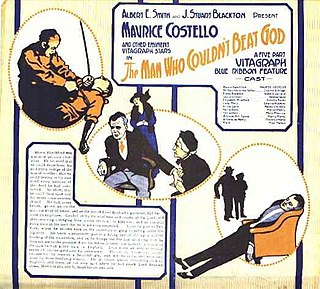
The Man Who Couldn't Beat God is a 1915 American silent film written by Harold Gilmore Calhoun and directed by Maurice Costello and Robert Gaillard. It stars Maurice Costello, Robert Gaillard and Mary Charleson.



















